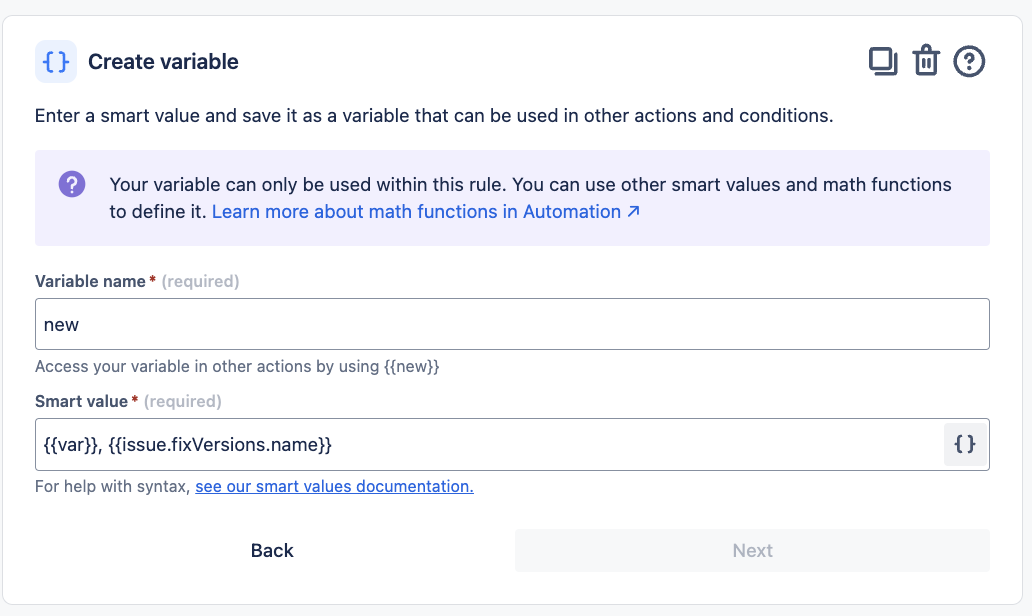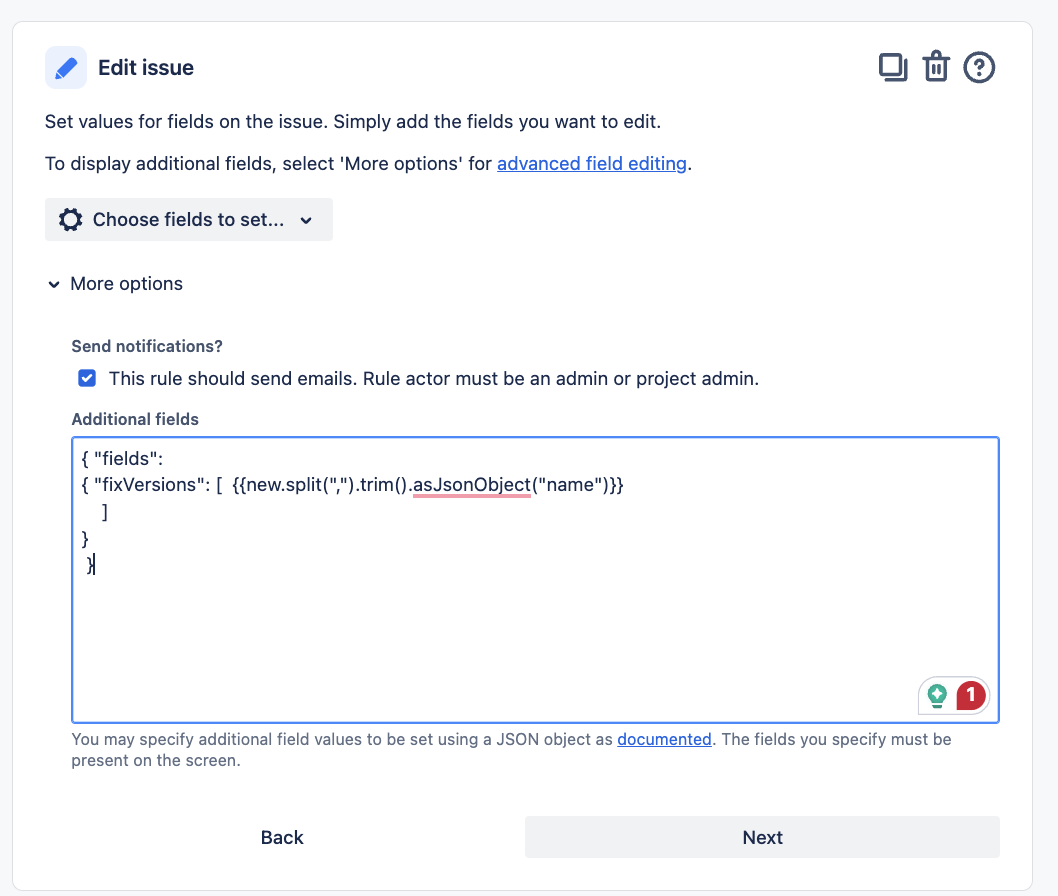Append Fix Version field with next unreleased fixed version
Platform Notice: Cloud Only - This article only applies to Atlassian products on the cloud platform.
Summary
This article describes how to append the Fix Version field with the next unreleased fix version using Jira Cloud's automation rules, particularly when there is already more than one value in the Fix Version field.
Environment
Jira Cloud.
Solution
Set Up the Trigger: Select a trigger, such as "Issue Created" or "Issue Updated," depending on when you want the rule to run.
Create a smart variable: Create a smart value that will store the existing 'fix version' names.

1{{issue.fixVersions.name}}
Add edit issue action: Add an edit issue action to update 'Next released version by release date' in 'fix version' field
Add a re-fetch action: This action will re-fetch the updated values for fix version
Create custom variable: Create a new custom variable and store both old and new(Next released version by release date) values of 'fix version' separated by a comma.

1{{var}}, {{issue.fixVersions.name}}
Add an edit issue action: Add an edit issue action with more options and use the below smart value to update the 'fix version' field using JSON

1{ "fields": { "fixVersions": [ {{new.split(",").trim().asJsonObject("name")}} ] } }
Was this helpful?
